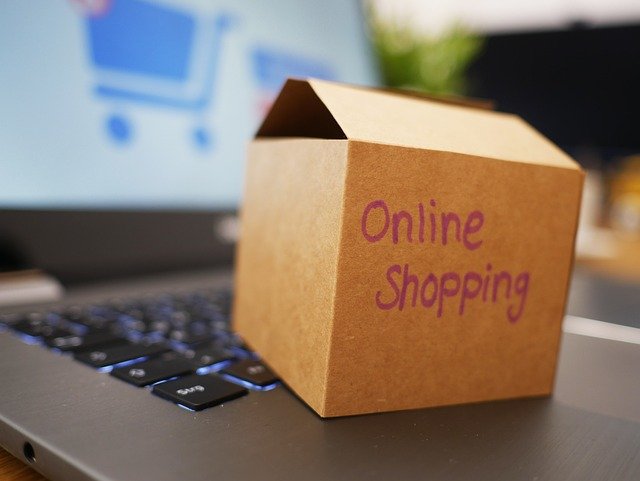Using Mobile Tools to Streamline Purchase Decisions
Mobile tools can reduce friction in online shopping by surfacing product details, running pricecomparison checks, and keeping payment and delivery options visible. This short overview explains how mobile features influence choices and what to consider when using apps for purchases.

Mobile devices are increasingly central to how people research, compare, and complete purchases. Beyond browsing, mobile tools can present tailored product recommendations, integrate payment options, and show delivery and returns policies in one place. For shoppers and merchants alike, the ability to access cart contents, estimate shipping and international taxes, and verify warranty or packaging details on a phone can speed decisions and reduce abandonment at checkout.
How mobile apps affect ecommerce and cart choices
Mobile apps and responsive sites adapt ecommerce experiences to smaller screens while keeping key cart details prominent. Clear visuals, saved preferences, and one-tap options help shoppers decide whether to add items to a cart. Features such as persistent carts across devices and synced wishlists let users pause and resume shopping without losing selections. For retailers, highlighting stock availability, estimated delivery dates, and packaging options within the product view helps set realistic expectations and reduces surprise costs later in the process.
How mobile streamlines checkout and payments
Mobile-first checkout flows emphasize form minimization and payment convenience. Autofill, digital wallets, and saved card options reduce typing on small keyboards and lower friction at checkout. Mobile payment integrations also support alternative methods—bank transfers, buy-now-pay-later, and wallet tokens—accommodating varied customer preferences. Ensuring the checkout clearly shows total costs, including taxes and shipping, helps prevent cart abandonment by giving consumers full transparency before they confirm payment.
Mobile tools for delivery, shipping, and international taxes
Delivery and shipping details are frequent decision drivers, especially for international shoppers. Mobile tools can display shipping options, tracking links, and estimated arrival windows directly in the purchase flow. For cross-border orders, integrated calculators that show duties and taxes help buyers understand landed cost before checkout. Offering local services or region-specific carriers in the mobile interface can also improve confidence, while real-time updates on shipping status reduce post-purchase support inquiries.
Returns, warranty, and packaging on mobile
Clear return policies, warranty information, and packaging options influence purchase decisions and post-sale satisfaction. On mobile, concise summaries with links to full policies allow buyers to assess risk quickly. Easy-to-initiate returns, prepaid labels, or scheduled pickups shown in the app can make a purchase feel safer. Including packaging details—eco options or gift packaging choices—can be relevant for gift purchases and help shoppers choose between similar products.
Personalization and pricecomparison features
Personalization on mobile can surface relevant items based on previous behavior, current cart contents, or location. Pricecomparison tools embedded in apps or available as browser extensions enable shoppers to verify deals and promotions across sellers. When personalization is transparent and respects privacy, it helps shoppers find the right product and price faster. Displaying contextual recommendations alongside price comparisons and product ratings supports informed decisions without forcing users to leave the app.
Security and pricing comparisons
Security is essential when mobile tools request payment details or store personal data. Look for secure connections, trusted payment providers, and clear permission prompts. At the same time, practical cost awareness helps shoppers choose platforms and services that match their needs. Below is a concise comparison of common mobile shopping or payment services and rough cost indications to help weigh trade-offs.
| Product/Service | Provider | Cost Estimation |
|---|---|---|
| Ecommerce platform (mobile apps, POS) | Shopify (Shopify Mobile / POS) | Monthly plans commonly start around $39/month for basic tiers; transaction fees vary by payment method and plan |
| Mobile payments and buyer protection | PayPal Mobile | No monthly fee for buyers; merchant transaction fees commonly near 2.9% + $0.30 per domestic transaction (varies by country and volume) |
| Payment processing SDKs | Stripe Mobile | No monthly fee for basic use; processing fees often around 2.9% + $0.30 per successful card charge (regional variations apply) |
| Marketplace shopping app | Amazon Shopping | App use is free for buyers; sellers face referral and selling fees that vary by category and plan |
| Product listing and ads | Google Shopping / Merchant Center | Listing can be free; advertising via Google Ads incurs costs based on bidding and competition |
Prices, rates, or cost estimates mentioned in this article are based on the latest available information but may change over time. Independent research is advised before making financial decisions.
Conclusion Mobile tools shape purchase decisions by combining product information, personalization, secure payments, and transparent delivery or returns information in one experience. For shoppers, the value lies in clear totals, reliable shipping estimates, and trustworthy payment flows. For merchants, mobile optimization, visible cart and checkout details, and thoughtfully presented warranty and packaging choices can reduce friction and improve conversion while supporting long-term customer satisfaction.





